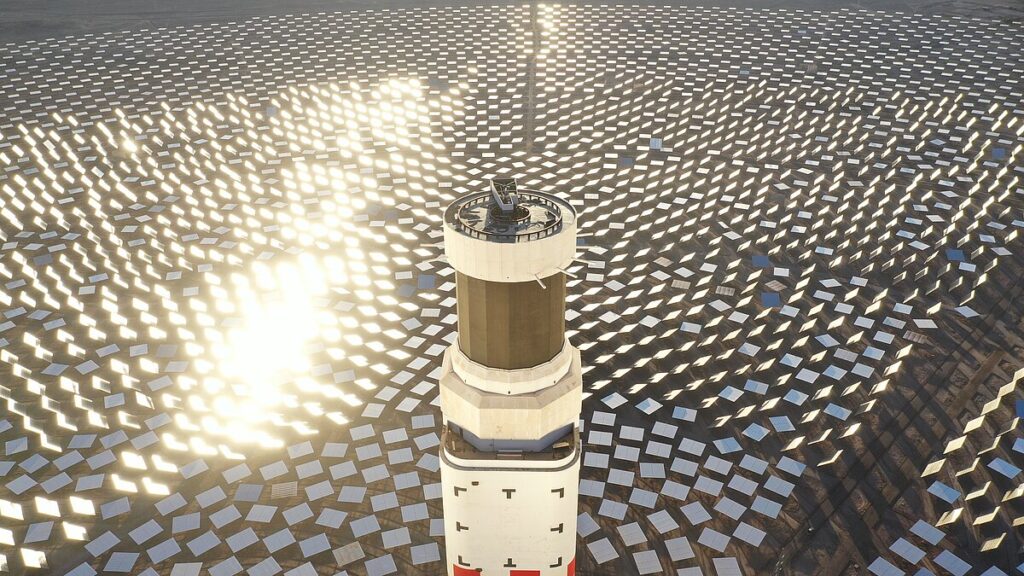
Concentrated solar power (CSP) technology uses sunlight to produce electricity. It does this by using mirrors or lenses to concentrate a large areas of sunlight onto a small area. The concentrated energy is them used to heat a fluid which drives a turbine connected to a generator. It provides the advantage of thermal energy storage which allows electricity generation. South America has adopted this technology due to its vast sunny areas suitable for this development. The region could mix this technology with policy support, tech advancements and international investment. There are several CSP plants like Cerro Dominador located in the Atacama Desert in Chile. Other countries like Argentina, Peru and Brazil have potential for concentrated solar power. This is from the growing demand for electricity and high solar radiation levels.
Assessing concentrated solar performance in South America
South America have abundant sunshine levels that present a compelling case for CSP deployment. There are already established concentrated solar power plants in South America. There are several ways to test and check the performance of these CSP plants. The key performance indicators include capacity factors, energy yield, performance ratio and levelized cost of energy. Additionally, there are several factors that affect the performance of concentrated solar power. These include solar resource, technology, thermal storage, grid integration and operation and maintenance.
Methodology and technologies for concentrated solar power
Concentrated solar power has the ability to concentrate sunlight onto a small area to generate thermal energy. There are various methodologies and technologies used for CSP in South America. These have designs to leverage the abundant solar resources in the region. Utilizing these technologies helps move towards a more sustainable energy future. This is because they reduce the dependence on fossil fuels and improving energy security. The following are the several methodologies and technologies used for CSP in South America.

- Solar power towers – solar power towers use a field of flat, movable mirrors called heliostats to concentrated sunlight onto a receiver at the top of a tall tower. The concentrated sunlight heats molten salt to extremely high temperatures. The heated molten salt helps generate steam which drives a turbine to produce electricity. For instance, the Cerro Dominador CSP plant combines a 110MW solar power tower with 17.5 hours of thermal storage. This provides a reliable energy supply for the grid.
- Linear Fresnel reflectors – this uses many flat or curved mirrors to concentrate sunlight onto a fixed receiver above the mirrors. These systems use a heat transfer fluid in the receiver to generate steam. The steam then serves to drive a turbine connected to an electrical generator. This technology can work in smaller-scale projects to other renewable energy sources.
- Hybrid systems – CSP can work with photovoltaic (PV) solar panels to create hybrid systems. These can generate electricity during the day while the CSP plant with storage provides power during non-sunlight hours. They can also serve with wind or biomass to create hybrid renewable energy systems.
- Parabolic trough systems – these consist of long, curved mirrors that focus sunlight onto a receiver tube running along the focal line of the trough. The receiver tube contains a heat transfer fluid heated to high temperatures. The heated fluid helps to produce steam drives a turbine connected to an electrical generator. For instance, the Cerro Dominador project uses this tech combined with molten salt storage to generate electricity.
Challenges facing CSP plants in South America
The use of concentrated solar power provides various benefits and potential for renewable energy generation. However, it also faces several challenges that may hinder the development and deployment of the projects. It is important for companies to address these challenges to unlock its full potential. Addressing these challenges could also pave way for CSP to contribute to South America’s renewable energy future. The following are the common challenges facing CSP plants.

- Technical and infrastructure challenges – such challenges include grid integration, technical expertise and water usage. Grid integration would need upgrading transmission infrastructure and lead to higher operational costs.
- High capital costs – CSP plants need upfront investments compared to other renewable energy sources. This is including cost of land, mirrors, turbines and thermal storage systems. It can also be hard to secure financing for the concentrated solar power.
- Economic and market conditions – CSP faces competition from established and less expensive renewable energy sources. Energy prices are low which makes it difficult for CSP projects to compete on a cos basis.